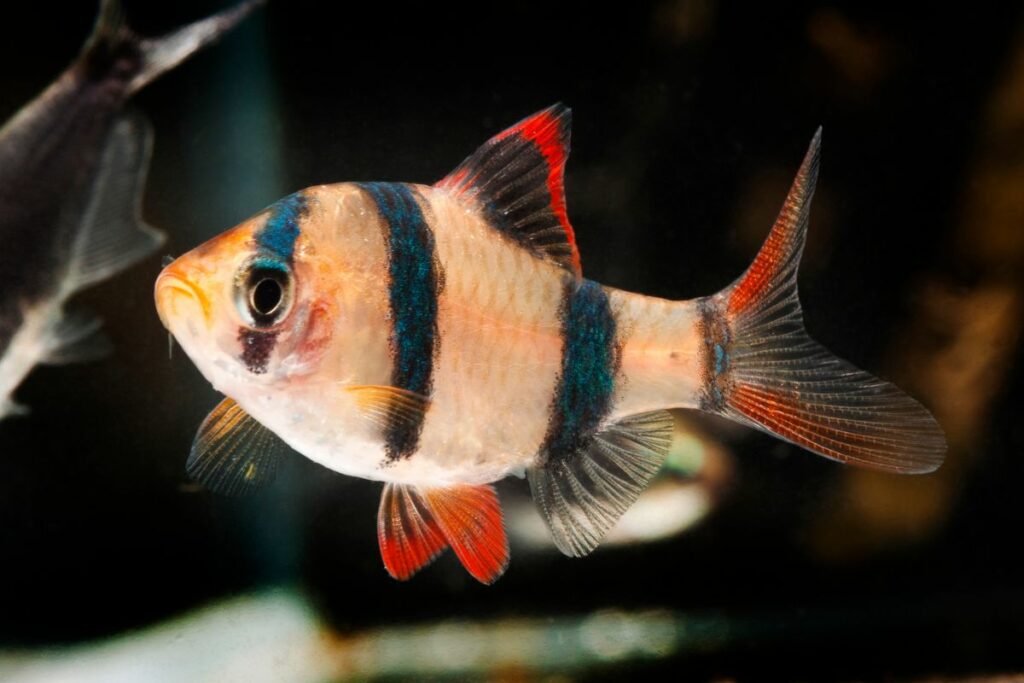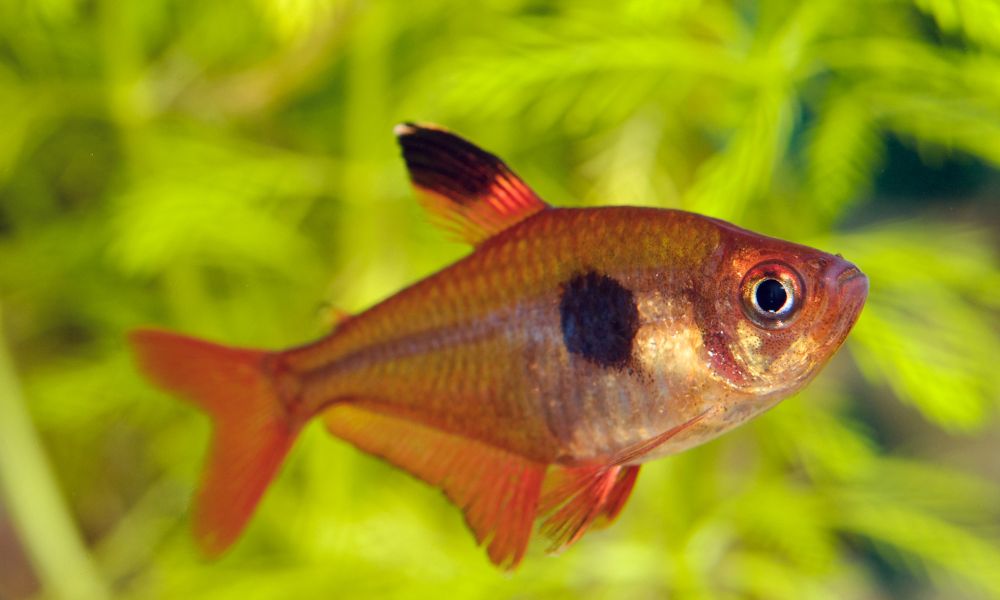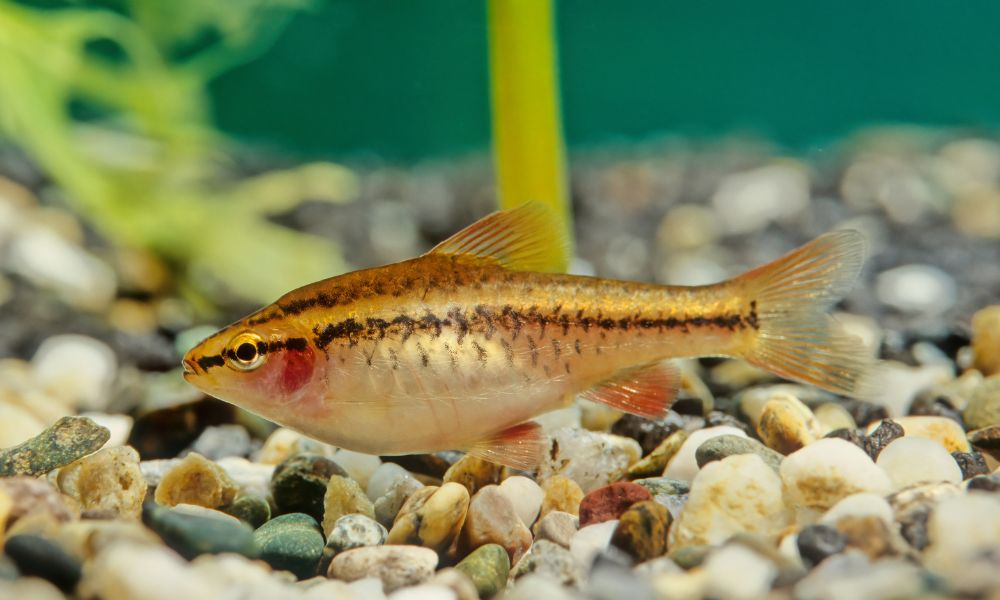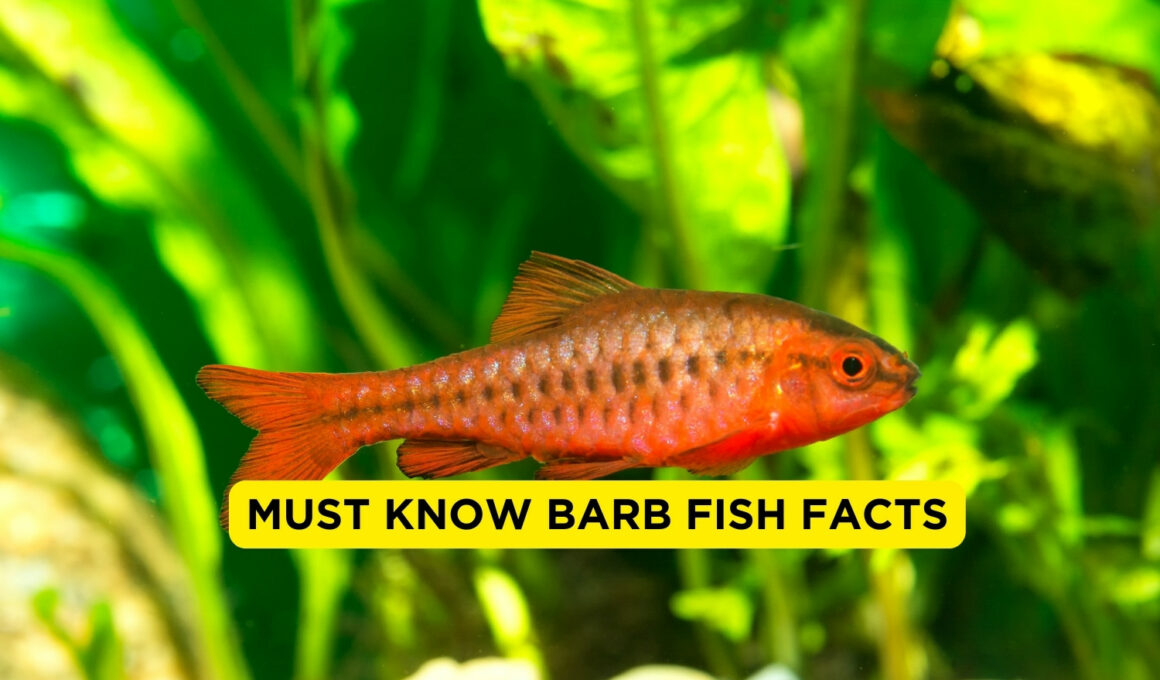In this article Show
As an experienced fishkeeper, I understand the importance of having the right knowledge to care for these vibrant creatures. Barb fish, known for their lively behavior and striking colors, are a delight to observe in any aquarium setting.
In this article, we’ll uncover nine essential facts about Barb fish that every aquarium owner should know. From their origins to their care needs, we aim to equip you with practical insights to enhance your fish-keeping journey.
Whether you’re setting up a new tank or looking to add some dynamic movement to your existing aquatic setup, understanding these facts about Barb fish will be invaluable.

Fact 1: Origin and Habitat
Barbs fish, a diverse and vibrant group, hail primarily from the tropical regions of Southeast Asia, encompassing countries like India, Sri Lanka, and Indonesia. These adaptable fish thrive in a range of freshwater environments, but they are most commonly found in shallow, moving waters like rivers and streams.
The natural habitat of Barb fish is characterized by a rich aquatic landscape, abundant in plants and with a moderate current, providing them with ample hiding spots and a stimulating environment.
In their native settings, Barb fish are accustomed to a tropical climate with warm water temperatures, typically ranging between 22 to 26 degrees Celsius (72 to 79 degrees Fahrenheit).
The water in these regions is often slightly acidic to neutral in pH, mirroring the conditions they prefer in home aquariums. Understanding these natural conditions is crucial for recreating a comfortable and healthy habitat for Barbs fish in captivity.
Fact 2: Varieties of Barbs Fish
Barb fish come in a variety of species, each boasting unique characteristics and colors. Here are some of the most popular types:
Tiger Barb (Puntigrus tetrazona)
Known for their striking black stripes and vibrant orange body, Tiger Barbs are active and playful. They grow up to 3 inches in length and are a favorite for their bold patterns.
Cherry Barb (Puntius titteya)
Smaller in size, Cherry Barbs are named for their deep red coloration, especially prominent in males. They are peaceful and grow up to 2 inches, making them suitable for community tanks.
Rosy Barb (Pethia conchonius)
Recognized for their rosy pink hue, Rosy Barbs are larger, reaching up to 6 inches. They are robust and adaptable, thriving in various aquarium conditions.
Gold Barb (Barbodes semifasciolatus)
Exhibiting a golden-yellow body with black spots, Gold Barbs are peaceful and hardy. They typically grow up to 3 inches and are known for their shimmering scales.
Green Tiger Barb (Puntigrus tetrazona var.)
A variation of the Tiger Barb, these fish have a unique greenish hue mixed with the traditional stripes. They are as active and playful as their more common counterparts.
Denison Barb (Sahyadria denisonii)
Also known as ‘Red-Line Torpedo Barb’, they are distinguished by a striking horizontal red line on their body. Growing up to 6 inches, they are fast swimmers and add dynamic movement to any tank.
Each of these Barb fish varieties brings its own charm and requirements to the aquarium, contributing to the diversity and beauty of the aquatic world.
Fact 3: Physical Characteristics
Barb fish are known for their diverse and striking physical characteristics. Here’s a brief overview:
1. Size
Most Barb fish are relatively small, typically ranging from 2 to 6 inches in length, depending on the species. This size makes them ideal for a variety of aquarium sizes.
2. Color
They exhibit a wide range of vibrant colors and patterns. For instance, Tiger Barbs display bold black stripes on a bright orange or yellow body, while Cherry Barbs have a deep red hue. The color intensity can vary based on factors like diet, health, and breeding conditions.
3. Features
Barbs are recognized for their streamlined bodies and forked tails, features that aid in their agility and speed in the water. They have barbels (whisker-like structures) near their mouths, a characteristic that inspired their name.
4. Identification
To identify Barb fish, look for their distinctive body shapes, vibrant colors, and the presence of barbels. The specific pattern of stripes or spots, along with the body color, can also help distinguish between different species of Barbs.
Understanding these physical attributes is essential for proper identification and appreciation of the beauty and diversity of Barbs fish in your aquarium.

Fact 4: Diet and Feeding Habits
A proper diet is crucial for the health and vitality of Barb fish. Here’s a straightforward guide to their feeding habits:
1. Diet
Barbs are omnivorous and have a diverse diet. They readily eat high-quality flake foods, pellets, and live or frozen foods like brine shrimp, daphnia, and bloodworms. Including vegetable matter or algae-based foods in their diet is also beneficial.
2. Feeding Frequency
Feed your Barbs small amounts of food two to three times a day. Overfeeding can lead to health problems and tank pollution, so it’s important to give them only as much as they can consume in a few minutes.
3. Varied Diet
To ensure optimal health and coloration, provide a varied diet. This not only meets their nutritional needs but also encourages natural foraging behavior.
4. Observation
Regularly observe your fish during feeding to ensure they are eating well and to monitor their health. Any changes in appetite can be an early indicator of health issues.
Maintaining a balanced diet and consistent feeding schedule is key to the well-being of your Barbs fish.
Fact 5: Aquarium Conditions for Barbs Fish
Creating the ideal aquarium environment for Barbs fish is essential for their health and well-being. Here’s a straightforward guide to setting up the perfect habitat:
1. Tank Size
A minimum of 20 gallons is recommended for smaller species of Barbs, while larger species will thrive in a tank of 30 gallons or more. This space allows for adequate swimming room and social interaction.
2. Water Conditions
Maintain a water temperature between 72 to 79 degrees Fahrenheit (22 to 26 degrees Celsius). The pH level should be slightly acidic to neutral, ideally ranging from 6.0 to 7.5.
3. Filtration and Aeration
Good quality filtration is necessary to keep the water clean and oxygen-rich. Barbs fish enjoy a moderate water flow, mimicking their natural riverine habitats.
4. Plantation and Decor
Include a variety of live plants and decor to provide hiding spots and mimic natural cover. This setup not only replicates their natural environment but also helps reduce stress.
5. Lighting
Standard aquarium lighting is suitable. It’s important to mimic a natural day-night cycle to maintain the fish’s health and well-being.
Remember, a well-maintained tank not only keeps Barbs fish healthy but also enhances their colors and promotes natural behavior
Fact 6: Social Behavior and Compatibility
Barbs fish are known for their social and active nature, making them lively additions to any aquarium. Here’s what you need to know about their social behavior and compatibility:
1. Group Dynamics
Barbs are schooling fish and thrive in groups. A group of at least five to six is recommended to ensure they feel secure and display natural behaviors. This grouping also reduces the chance of nipping, a behavior sometimes observed in smaller groups.
2. Compatibility
When it comes to tank mates, Barbs are generally compatible with other peaceful, similarly-sized fish. Good companions include tetras, danios, and some types of catfish. Avoid housing them with long-finned fish, as Barbs can be fin nippers.
3. Tank Environment
A well-structured environment with plenty of space for swimming and areas to explore is ideal. This setup helps in maintaining a harmonious tank and allows for the display of their playful nature.
4. Hierarchy
Within their school, Barbs may establish a pecking order. This is normal and rarely results in harm if the tank is not overcrowded and there are ample resources.
Understanding the social dynamics and compatibility of Barbs fish is key to creating a balanced and stress-free aquarium environment for these active and engaging creatures.

Fact 7: Breeding and Reproduction
Breeding Barbs fish in captivity can be a rewarding experience. Here are key points to understand their breeding process and tips for success:
1. Setting the Stage
To encourage breeding, set up a separate breeding tank with ample plant cover, such as java moss, for egg-laying. The water should be slightly warmer than usual, around 77 to 80 degrees Fahrenheit (25 to 27 degrees Celsius), with a slightly lower pH.
2. Selecting Breeders
Choose healthy, mature fish for breeding. Typically, Barbs reach breeding age around six months. The males are usually brighter in color and slimmer than females.
3. Spawning Behavior
During spawning, the female Barbs will scatter eggs among the plants, which the male then fertilizes. Barbs do not exhibit parental care; hence, it’s common to remove the adults post-spawning to prevent them from eating the eggs.
4. Egg Care
The eggs will hatch in about 24 to 48 hours. Initially, the fry will feed on their egg sac, and after this, they can be fed with infusoria or specially formulated fry food.
5. Fry Development
Provide the fry with clean water and appropriate food to ensure healthy growth. As they mature, they can gradually be introduced to standard aquarium conditions.
Remember, patience and attention to water quality and diet are key to the successful breeding of Barbs fish in a home aquarium.
Fact 8: Common Health Issues and Care
Like all aquarium fish, Barbs can encounter health issues. Awareness and proper care are essential for prevention and treatment. Here are common health concerns and care tips:
1. Ich or White Spot Disease
Characterized by white spots on the skin and fins, it’s a common ailment. Maintaining clean water and the right temperature, along with specific medication, can treat this condition.
2. Fin Rot
This bacterial infection causes the fins to fray and decay. Good tank hygiene and water quality are crucial for prevention. Antibacterial treatments are effective in the early stages.
3. Swim Bladder Disorder
This affects the fish’s buoyancy. Often caused by poor diet or water quality, ensuring a balanced diet and regular tank maintenance can prevent it.
4. Bacterial Infections
Symptoms include ulcers or discoloration. Prompt water changes and antibiotic treatments are necessary.
5. Care Tip
Regular tank cleaning, maintaining proper water parameters, and providing a balanced diet are fundamental for keeping Barbs healthy. Also, observe your fish regularly for any signs of distress or illness.
Early detection and proper tank management are key to addressing these common health issues in Barbs fish.
Fact 9: Lifespan and Growth
Understanding the lifespan and growth patterns of Barb fish is important for proper care and expectations as an aquarium owner. Here’s a concise overview:
- Lifespan: On average, Barbs fish live for about 5 to 7 years in a well-maintained aquarium. This can vary based on species, care, and environmental conditions.
- Growth Rate: Barbs fish are relatively fast growers. They typically reach adult size within a year, depending on the species and the conditions of their environment.
- Maturity: Most Barbs species reach sexual maturity around 6 months of age, which can be an indicator of their transition from juvenile to adult stage.
- Factors Affecting Growth and Longevity: Diet, water quality, and tank conditions play significant roles in their growth and overall lifespan. A balanced diet, regular tank maintenance, and stable water parameters are essential for healthy growth and maximizing their lifespan.
By providing optimal care and a suitable environment, you can ensure that your Barbs fish not only grow well but also enjoy a full and healthy life.






